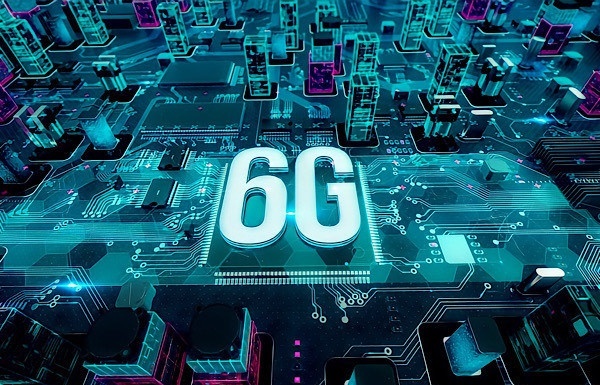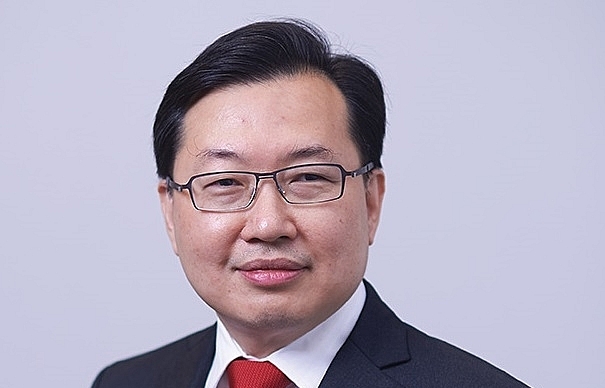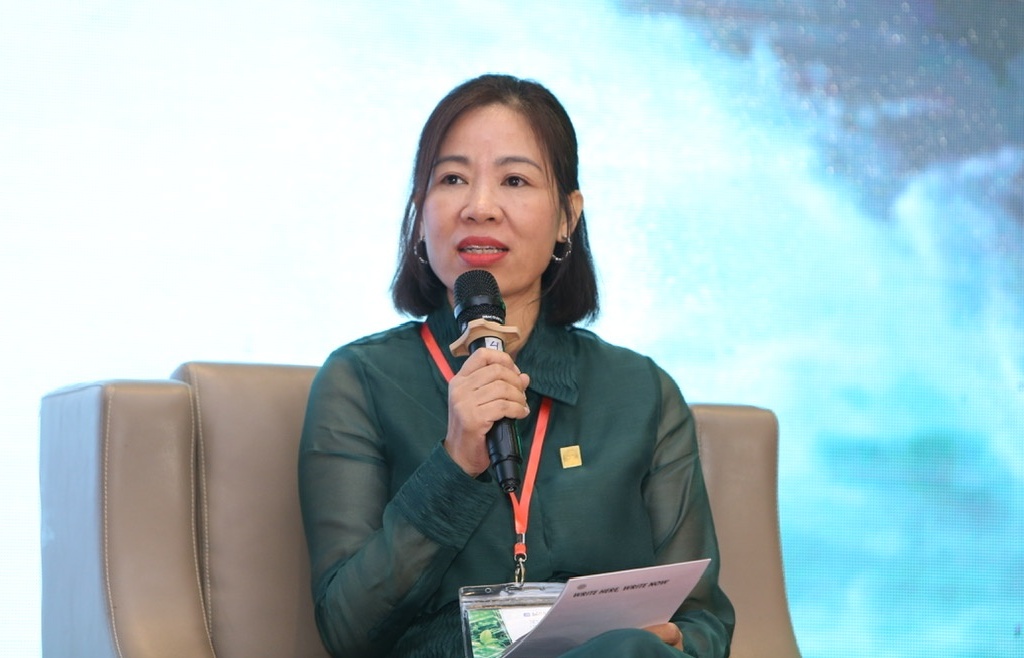Building a more sustainable future with 6G
 |
| Satish Dhanasekaran, senior vice president and COO at Keysight Technologies |
The emerging vision for 6G is to make possible near-instant and ubiquitous connectivity to transform how the human, physical, and digital worlds interact. This means new ways to leverage data, computation, and communication for further integration into society.
The technology could support holographic communications, a tactile internet, intelligent network operations, network and computing convergence, and many more exciting possibilities. 6G will both expand upon and go far beyond the capabilities of 5G, marking a new era of wireless that accelerates digitalisation and drives business innovation across critical industries.
Shaping a more sustainable future
Besides an economic boon, it has become imperative that the technologies of tomorrow deliver positive environmental and social change, and 6G is foundational to this vision. 6G Flagship, a consortium of academic and industry leaders guiding 6G research, released a whitepaper examining the role that this technology can play not just in increasing productivity, but in aiding humanity.
The programme, which Keysight is proud to have co-created, is pushing for 6G to align with the United Nations Sustainable Development Goals, which outline efforts to enable more prosperous and sustainable communities around the world. More recently, the Next G Alliance, the North America-focused 6G Consortium of which Keysight is a founding member, released a white paper outlining their vision of their path to sustainability in 6G.
6G’s environmental sustainability use cases
As climate change brings rising temperatures and extreme weather, global citizens are demanding urgent action. NASA reports that increased carbon emissions have raised the planet’s average surface temperature by 1.18 degrees Celsius since the late 19th century – and the seven most recent years have been the warmest on record.
A total of 135 countries and hundreds of companies worldwide have pledged carbon neutrality. The technology sector is poised to create long-term solutions toward environmental sustainability. In particular, an electronic design can support the development of clean energy systems, data analytics for environmental applications, and machine technology advancements that reduce carbon emissions.
By focusing on sustainability as a key driver of 6G research, Keysight Technologies will discover new ways to combat climate change in the following industries and beyond.
Transportation
The US transportation industry is currently the largest contributor (29 per cent) of greenhouse gas emissions, according to the US Environmental Protection Agency. 6G will enable innovations in smart transportation and logistics, including connected vehicles and transit infrastructure.
The growth in driverless electric vehicles will not only promote clean energy but will also reduce emissions by optimising traffic flow. These outcomes will be made possible by applying wireless connectivity to sensor technology, distributed computing, and AI. This combination of new technologies will allow vehicles, traffic cameras, and roads to communicate and coordinate in real-time.
The Global System for Mobile Communications Association (GSMA)’s 2020 Mobile Industry SDG Impact Report found that the increase in vehicle monitoring, route optimisation, and fuel efficiency through telematics helped avoid approximately 105 million tons of greenhouse gases in 2018 – equivalent to taking 23 million cars off the road.
In Toronto, a smart traffic management system that enables traffic lights to self-learn and recognise patterns shortened travel times by up to 25 per cent and reduced emissions by 13 per cent.
Manufacturing
6G will build upon 5G’s ability to modernise all stages of manufacturing – from product design to the factory floor to the warehouse. Connected machines and cooperative robotics will be able to orchestrate all manufacturing and supply chain management activities, automating once-manual processes to enable more efficient and resilient supply chains.
6G-enabled manufacturing plants will also advance people’s ability to monitor and manage energy and water usage, reduce carbon emissions, and leverage renewable energy to power operations. For example, Ericsson’s Smart 5G Factory reduced waste reduction by 5 per cent, saved 5 per cent on energy costs, and increased overall energy efficiency by 24 per cent.
 |
| 6G’s environmental sustainability use case |
Agriculture
One of the main benefits of 5G and eventually 6G is expanding wireless access to rural areas. This opens new sustainability opportunities for the agricultural sector, where chemical fertilizers, pesticides, and animal waste release harmful greenhouse gases into the atmosphere.
Smart agriculture unlocks new ways to optimise crop production, conserve resources, improve soil health, and monitor livestock – all helping farmers reduce their carbon footprint. The GSMA report revealed that in California – where agriculture accounts for 80 per cent of all water use – solar-powered sensors and an LTE-served network reduced water consumption by 6 per cent and emissions by 5 per cent. And a recent Qualcomm study found that real-time data collected by IoT-enabled drones and sensors resulted in more efficient and accurate pesticide spraying that could reduce overall pesticide use by 50 per cent.
Energy
As the world’s population grows, so does the need to manage and reduce fossil fuel consumption. 6G will help the critical transition to renewable energy, as well as further advance the development of smart grids.
Smart grids will enable communities to better monitor increasing energy demands, optimise electrical distribution, and use automation to manage large variations in loads. The same Qualcomm report found 5G-connected smart grids will reduce gas and electricity consumption by 12 per cent – and 6G will accelerate that progress.
ICT
Telecommunications and technology sectors have an outsized influence on the economy as a whole, thus have a similarly outsized influence on energy consumption. AT&T for example estimates that in 2018, its technologies have enabled greenhouse gas (GHG) emission reductions that are twice as large as AT&T’s own entire GHG footprint. It has set a target of increasing 10x by 2025.
The ICT industry already has a large footprint (about a tenth of global electricity consumption) and is projected to rise significantly. The wireless communication industry, which is a big part of the ICT sector, has made it a primary 6G objective to reduce its energy usage and incorporate sustainability in its operational processes and lifecycle management.
Currently, the Radio Access Network consumes a major share of the energy (>50 per cent) of the wireless network architecture. The move towards cloudification is shifting more of the usage to data centres, where there is already tremendous momentum towards ‘greening’. A variety of techniques, such as smart idling of radios and resource pooling have already been incorporated into 5G, and more advanced approaches are under consideration for 6G.
Keysight’s commitment to accelerating sustainability through 6G
Corporations play a critical role in supporting global environmental and social prosperity, and at Keysight, the company takes this role seriously. As the sole test and measurement member of 6G Flagship, Keysight is in a unique position to help solve the challenges of 6G. The company has also partnered with organisations like ITU Telecommunication Standardisation Sector, the FCC’s Technological Advisory Council, and industry groups across the U.S., Japan, South Korea, China, and Europe.
Leveraging its research and development capabilities – as well as the company’s software and hardware solutions for design, simulation, and validation – Keysight Technologies aims to accelerate research in each of 6G Flagship’s four strategic areas: wireless connectivity, distributed intelligent wireless computing, device and circuit technologies, and vertical applications and services.
The firm will provide partners with solutions for all frequency bands, cybersecurity, device characterisation, network testing, data analytics, artificial intelligence, and techniques to measure and reduce power consumption. Finally, Keysight’s broad industrial expertise will help these groups navigate key areas such as automotive, the Internet of Things, high-speed digital, and energy.
Just like 5G, the next generation of connectivity represents a massive opportunity to impact technology, business, and society at large. Together with 6G Flagship partners and other technology partners around the globe, Keysight Technologies looks forward to defining standards and creating the technological building blocks to deliver a human-centric, sustainability-focused 6G network that changes lives, secures the world, and connects people across the globe.
What the stars mean:
★ Poor ★ ★ Promising ★★★ Good ★★★★ Very good ★★★★★ Exceptional
Themes: Digital Transformation
- OPSWAT introduces cybersecurity solutions for critical infrastructure
- Rising use of Generative AI Apps boosts consumer interest in differentiated connectivity
- Viettel launches O-RAN 5G network utilising Qualcomm platform
- AWS announces Generative AI Partner Innovation Alliance
- There’s no more time for hype when it comes to AI
Related Contents
Latest News
More News
- Growth beckons for GenAI startups in Vietnam (November 21, 2024 | 17:47)
- SABECO to elevate Vietnam's beverage industry to global standards (November 21, 2024 | 17:36)
- ABeam Consulting Vietnam introduces BSQCD Purchasing Strategy Framework (November 21, 2024 | 16:40)
- Major railway requires debt considerations (November 21, 2024 | 12:07)
- Reviving a new life cycle for plastic waste (November 21, 2024 | 09:16)
- Key balances maintained for industrial production (November 21, 2024 | 08:00)
- Ecolean Vietnam honoured with prestigious sustainability award (November 19, 2024 | 10:01)
- HEINEKEN Vietnam’s clear path towards net-zero (November 18, 2024 | 15:13)
- VLCA 2024 honours corporate governance excellence as listed companies raise the bar (November 18, 2024 | 09:00)
- High-tech personnel to drive competition (November 17, 2024 | 09:21)




 Tag:
Tag:





















 Mobile Version
Mobile Version